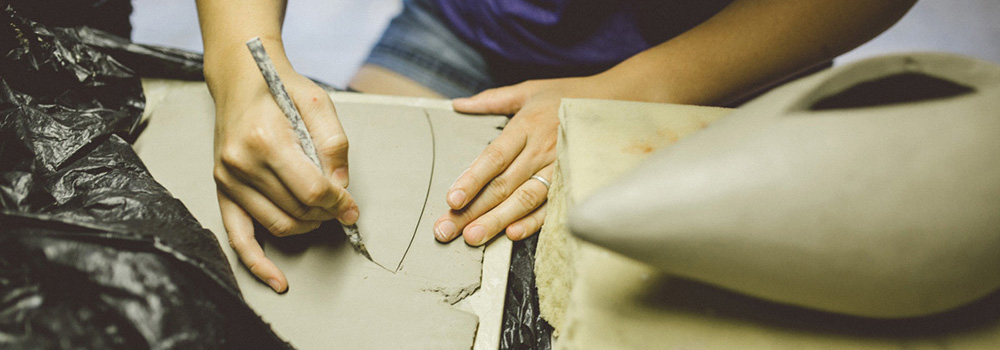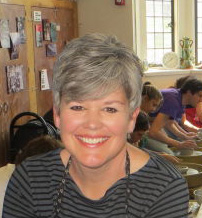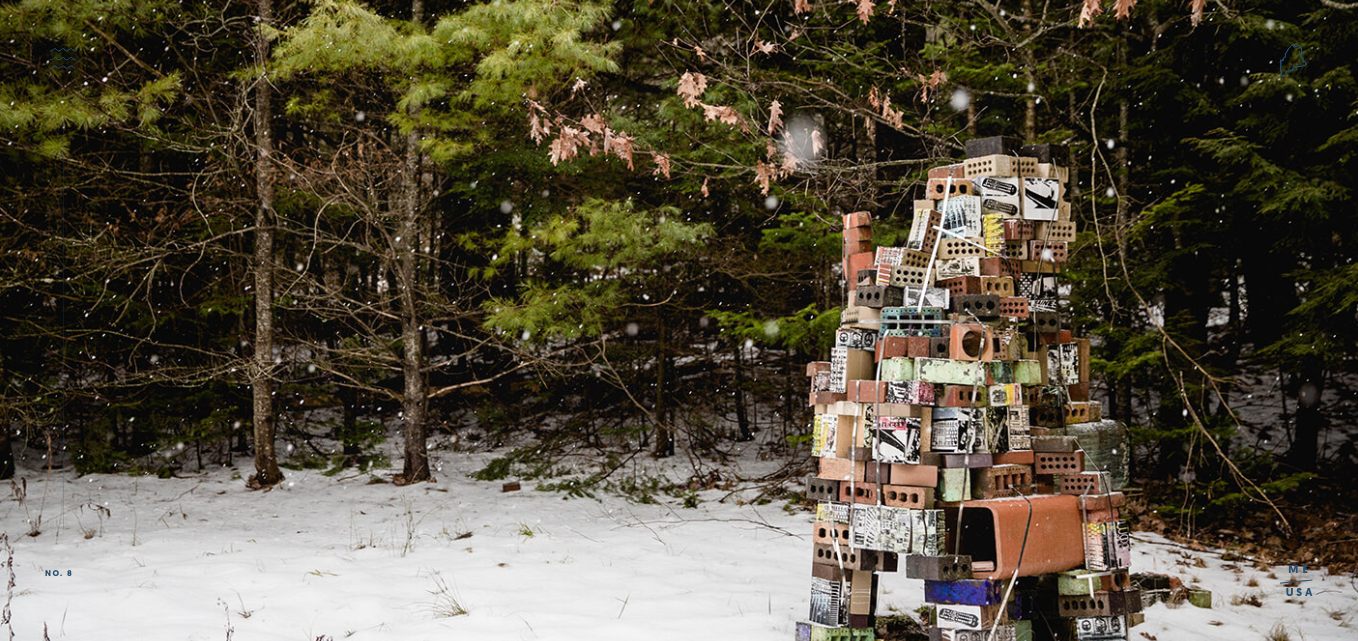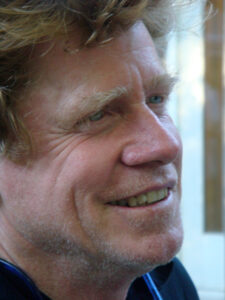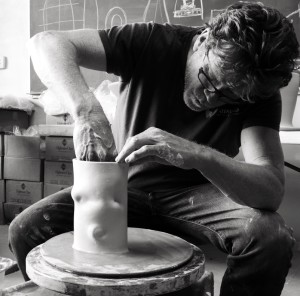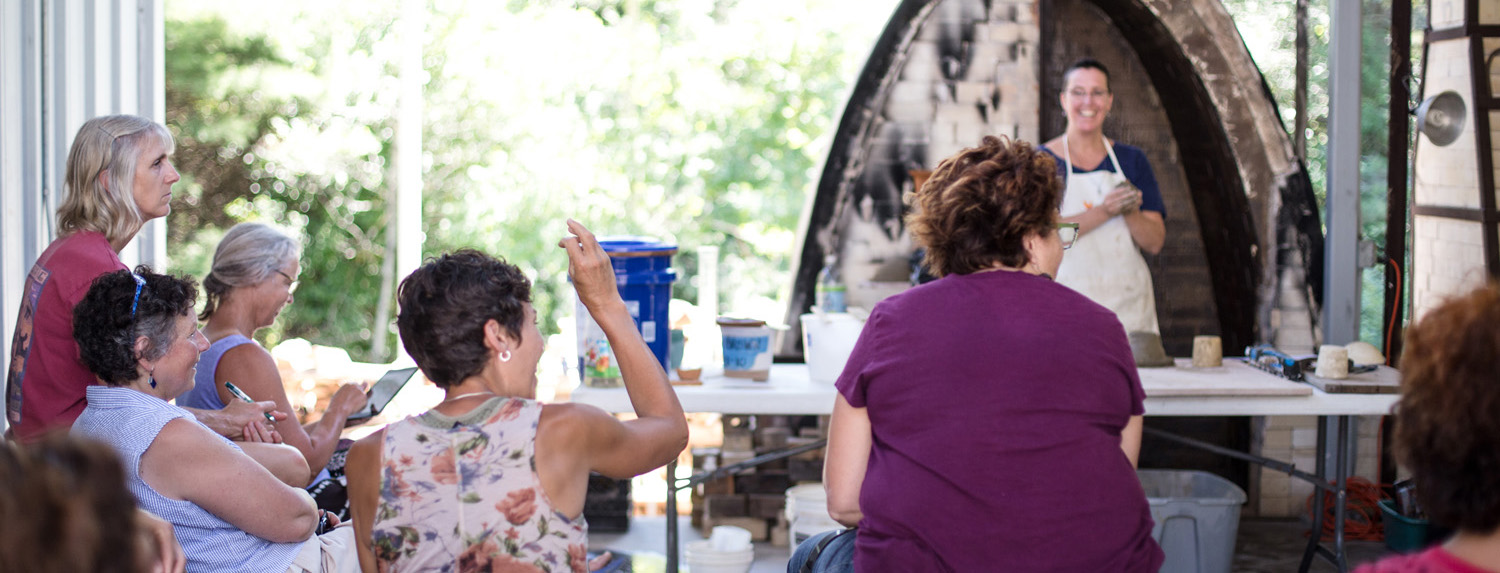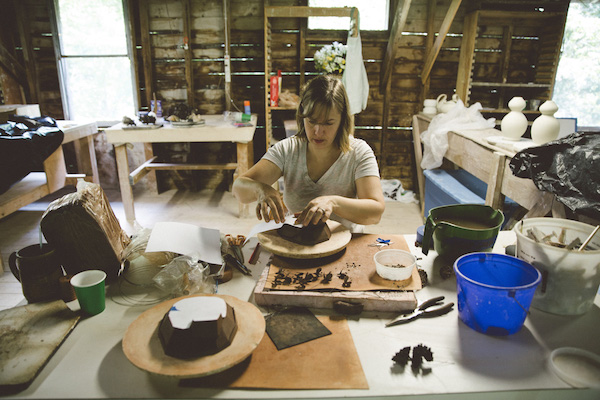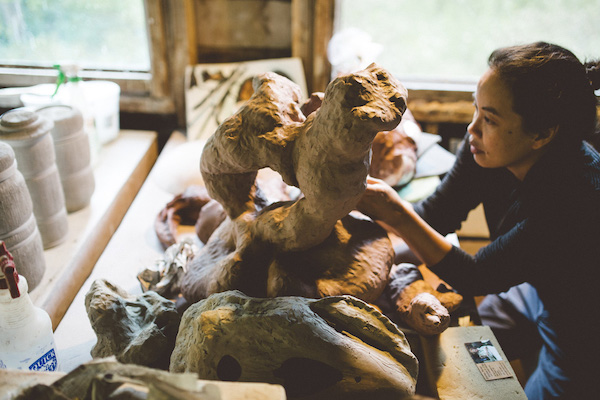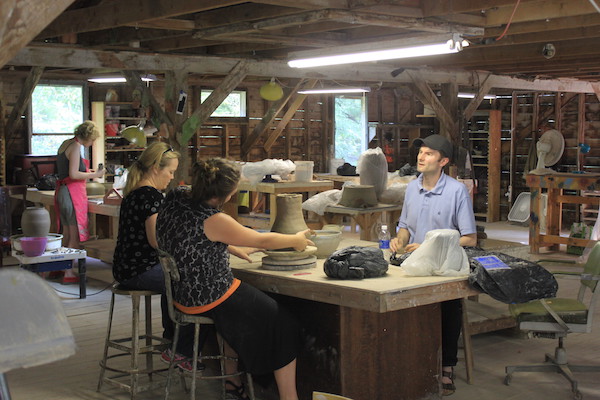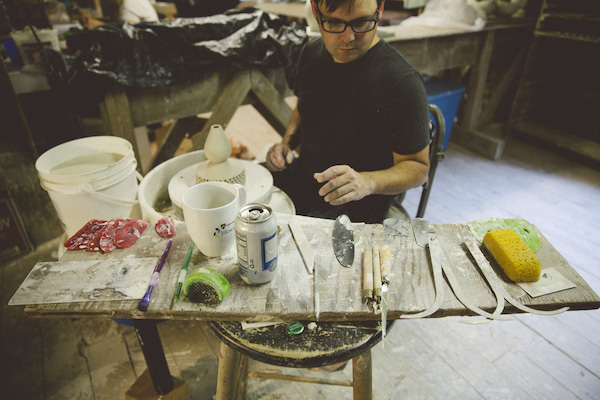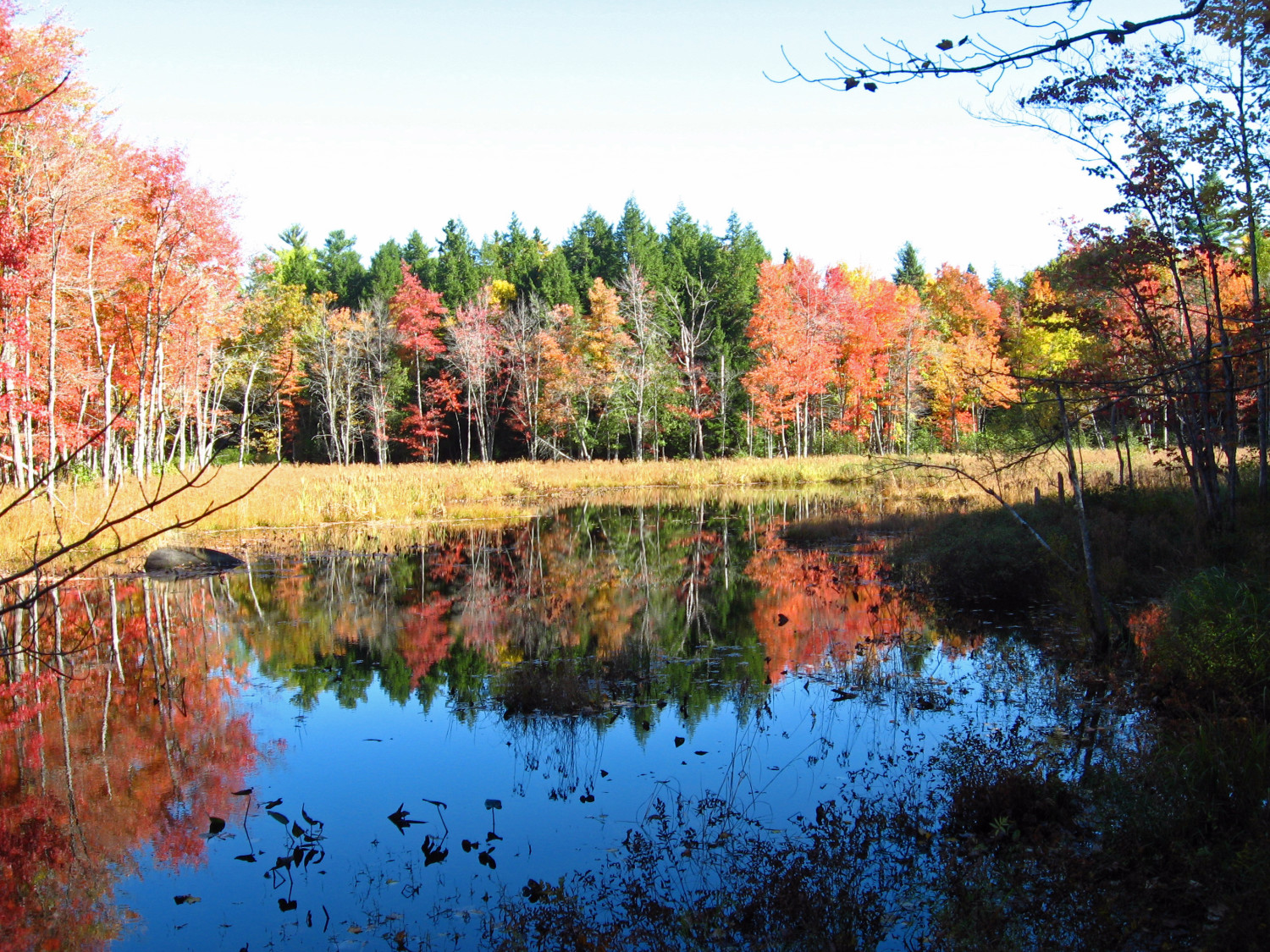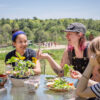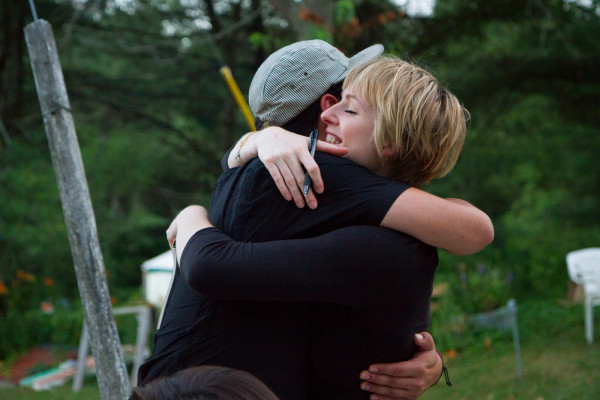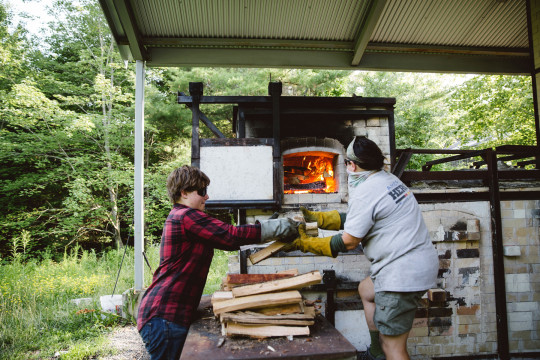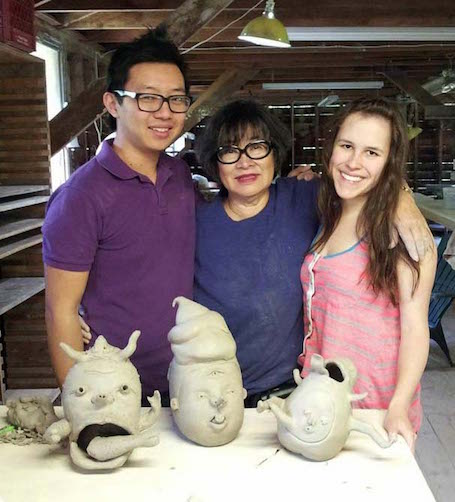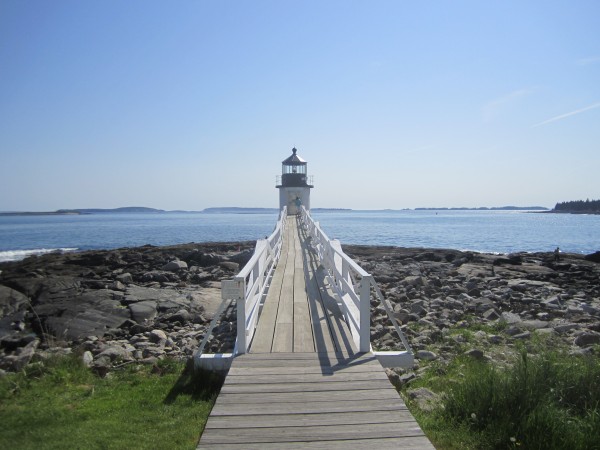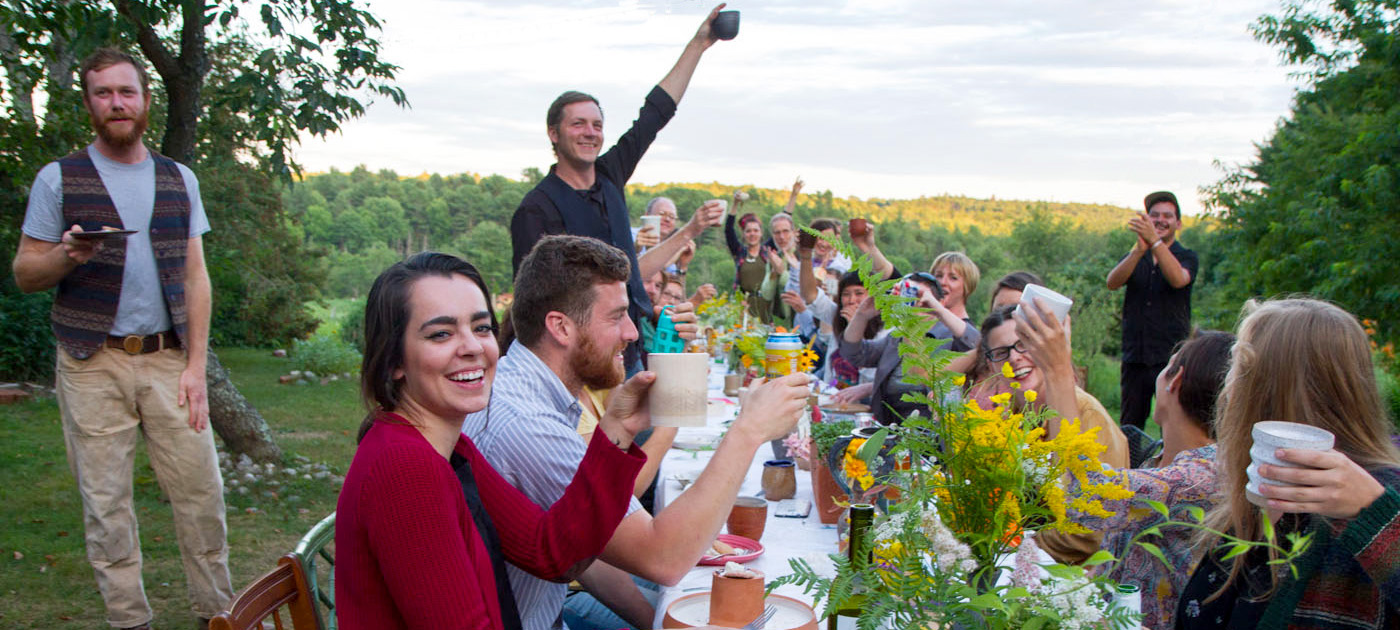Ever wonder about how we go about making our clay at Watershed? Studio Manager Wm. Reeder Fahnestock shares the process we use, along with historical background and geologic context for Maine’s rich history of clay-processing and brick production.
Maine’s Geological and Brick-Making History
Maine’s mountains are considered some of the oldest on Earth. Comprising the northern part of the Appalachian chain, the Longfellow Mountains were formed during the Ordovician Period some 485 million years ago. Extended periods of vast glaciation acted on the mountains. The sheer weight of the ice caused the Earth’s crust to push downward and the abrasive action of glacial movement and the scouring action of melting ice eroded the bedrock below. As the ice sheets retreated, the sea level rose, flooding the depressed plains, while glacial streams deposited vast amounts of sediments at their mouths where they emptied into the ocean. Finer particles like sand, silt and clay were deposited in discrete layers away from the coarser materials. With the weight of the ice gone, the land rebounded exposing the deposits. The Presumpscot Formation of glacial marine clay is ubiquitous in the Mid-coast region of Maine with individual deposits reported up to 200 feet thick.
As the country began to expand in the post-Colonial era, there was high demand for durable materials to build the growing metropolises. The abundance of easily accessible clay, ample fuel to burn the bricks, the proximity of navigable waters with easy access to the coast, and the seasonal nature of work provided the key ingredients for a thriving brick manufacturing industry along the Mid-coast region of Maine. Presumpscot Formation clay contains impurities like fine sand, marine shells, and organic matter that precludes the necessity of adding tempering ingredients commonly associated with purer clay deposits, making the clay particularly suited to brick making, which requires such constituents for strength at the fired stage. At least twenty-three brickyard sites have been identified on the Damariscotta River alone. At its peak in the mid-nineteenth century, the nearby town of Wiscasset boasted seven brick makers, some with the capacity to fire up to a million bricks at a time. Edgecomb, Boothbay and Walpole were all home to thriving brick manufacturers. In addition to being used in the construction of local architecture, the bricks were widely exported to ports south, such as Boston, and were used as ballast in ships carrying other cargo.
These brickyards were mostly decentralized, small-scale operations run as a low-investment component of agricultural endeavors. Brick making was extremely labor intensive with all aspects of the trade executed by hand, from the excavation of the raw materials, to the forming of the finished product, to the lading of the ships used to carry it away to distant markets. The process was relatively simple. The clay was extracted using shovels and pick axes and wheel-barrowed to a drying yard to become permeable enough to be slaked in water. A primitive circular pit mill usually powered by horse or oxen broke the clay down into fine particles and mixed it to a consistent slurry ready for molding. In the absence of a mill, simply having the animals walk back and forth over the raw material would break up and mix the clay. Large impurities like rocks were removed and the raw material in slurry form was hand pressed into molds. After drying for a day, the molds were turned out, or “struck”, and the bricks were stacked to dry further. Bricks produced in this method of manufacture are referred to as “waterstruck” bricks.
Depending on weather, the drying process could take anywhere from a week to several weeks. The dried bricks were then assembled into “scoves”, primitive kilns assembled on site for each firing. The scoves were fired with wood. The entire process of building the scove, firing the kiln, cooling and unloading could take up to a month.
As the nineteenth century came to an end and the industrial revolution began to change the face of American manufacturing, Maine brick makers were slow to adapt new technology. The local industry was largely unchanged over the course of several hundred years. The one innovation that did take hold here was the invention of the Hobb’s Mill, a low-technology unit that combined the slurry mixing process and the molding process, though production was still one brick at a time. The Hobb’s mill was not enough to sustain an industry not in the position to scale up to fully mechanized production. Extruded brick became the industrial standard along with large permanent kilns and the Maine brick making industry quickly declined.
Evidence of the boom period is clearly visible today with beaches along both the Damariscotta and Sheepscott rivers littered with the discards, now barnacle covered and worn smooth with the actions of tides and waves. Despite the fact that Maine was once considered the pinnacle of architectural brick manufacturing, today Morin Brick Co in Auburn is the only major brick manufacturer in the state and the last commercial American manufacturer of waterstruck brick.
Watershed’s Brick-Making Legacy
Watershed’s origins are inextricably entwined with the post-colonial brick manufacturing industry of the region. In 1974, during the ascendancy of the historic preservation movement, an attempt was made to revive the manufacture of waterstruck brick to supply what was projected to be an increasing demand. A large supply of locally mined Presumpscot clay was deposited on the property of Margret Griggs (which would later become Watershed) and a large chicken barn was relocated from elsewhere on the property to house a drying area and two large, oil fired, beehive kilns. Brick molds were made and an electrically modified Hobb’s Mill was installed adjacent to the clay hill. So was born the Watershed Brick and Clay Products Co. But much of the work was still labor intensive, production was limited to warm months and the location of the factory in a swale retarded drying times. Market forces did not materialize in their favor and transportation costs exceeded profitability. The enterprise lasted for only a year.
Margaret Griggs, an artist and investor in the brick factory, had long envisioned a place where ceramic artists could work on large scale pieces, either independently or in collaboration. In 1985 Griggs joined forces with local artist George Mason to organize a pilot project to utilize the brick factory site in a new way. George and Lynn Duryea joined twelve artists from the US and Britain to live and work on the property for a summer. In the fall, Chris Gustin invited students and graduate faculty from the Ceramics Department of the Swain School of Design to live and work for ten days at the former brickyard. The rustic and open-ended aspects of the facility encouraged the artists to approach their work with a new vigor and awareness. As a result, an enlightened community of artists came together to establish Watershed’s philosophy and shape its future as a residential ceramics facility
Today, while we no longer manufacture brick, we still use the clay that was deposited here for that purpose. One of the beehive kilns has been preserved and the Hobbs Mixer is still standing beside the clay hill. We no longer use the kiln or the mill, but we do harvest the clay and process it mostly by hand to supply artists with terra cotta derived from local deposits. While some artists prefer the clay straight off the hill, we make additions to the clay for use by residents. Straight from the ground the clay is rather rough, even by some brick making standards, with large particulates, organic matter and naturally occurring lime deposits. The occasional pebble or small bit of twig are not unusual and tend to make themselves apparent at the most inconvenient times in the construction process, appearing as you bring up a vessel wall or trim a foot. And the lime, invisible in the green stage, can cause breakage during the firing process. While passing the dry clay through a hammer mill mostly alleviates those problems, it is a time consuming step that is bypassed in the name of expediency and economics. We live with the impurities.
Watershed Clay Today
Our process consists of breaking up the exposed surface of the clay hill with shovels and bow rakes and passing the material through a series of screens to remove the largest impurities. This material is then spread on tarps to dry before being transferred to a Soldner clay mixer and slaked. Small amounts of commercially mined materials are added: fire clay to raise the firing temperature, ball clay to enhance its plasticity, and barium to counter the effects of soluble sulphates present in the clay. It is mixed until sufficiently homogenous and of the plastic consistency appropriate for studio ceramic use.
Unweathered Presumpscot clay is usually described as gray blue in color with striations that vary with depth. Sections closer to the surface tend to be browner which is considered to be a result of oxidation. No difference in the particle size, plasticity, mineral or organic content of the different striations has been discovered. The Watershed clay deposit is of the browner variety with a slight bluish/greenish tint when hydrated. Watershed’s clay matures at pyrometric cone 04 (1915° F) and can be fired as high as cone 1 (2028° F). At these temperatures it fires to a pleasing brick orange color. At higher temperatures it goes quickly from brown to black and becomes overfired. In reduction atmospheres it is highly prone to bloating. Used straight off the hill it becomes a pale greenish glaze at cone ten (2345° F) in reduction atmospheres.
Watershed’s residency program supports a hundred artists in a season, including our Salad Days Artist, who is tasked with making five hundred plates for sale at our annual summer fundraiser. The plates are made from the Watershed clay mixed on site. While not all artists use the Watershed brick clay, we produce a minimum of ten thousand pounds each summer. Although the process is time consuming, labor intensive and weather dependent we are proud to carry on a tradition so rich in local history.
